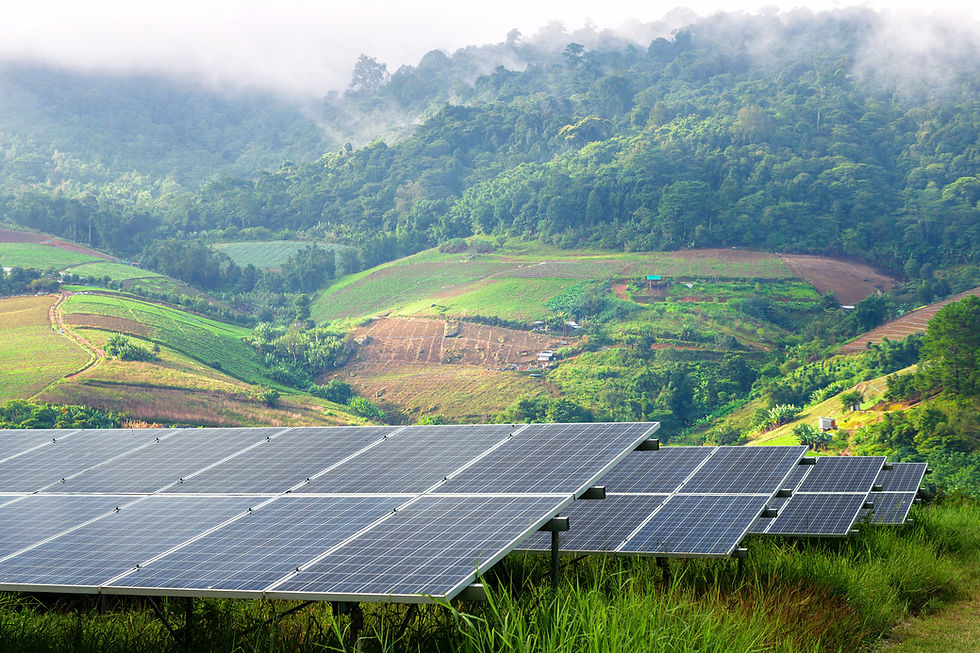India’s Renewable Energy Tenders: Poised for Growth Amid Market Shifts
- Nitin Sheoran

- Mar 14
- 3 min read
Several reputable sources confirm the undersubscription issues in India's renewable energy tenders during 2024:
IEEFA Report: 8.5 GW of renewable tenders were undersubscribed in 2024, a fivefold rise from 2023, due to complex tender designs and transmission delays.
PV-Tech: Despite a record 73 GW in tenders, 8.5 GW remained unsubscribed in 2024, citing intricate tender structures and transmission issues.

The undersubscription of renewable energy tenders in India during 2024, where approximately 8.5 gigawatts (GW) remained unsubscribed—a fivefold increase from 2023—can be attributed to several key factors, each supported by specific data:
Complex Tender Designs: The intricate and often unfavorable structures of tenders have deterred developer participation. In 2024, about 8.5 GW of utility-scale renewable energy tenders went undersubscribed, five times more than in 2023, owing to complex tender designs.
Delays in Interstate Transmission System (ISTS) Infrastructure: The readiness of ISTS infrastructure is crucial for the evacuation of power from renewable energy projects. Delays in its development have led to project uncertainties. In 2024, nearly 8.5 GW of tenders were undersubscribed due to delays in the readiness of ISTS infrastructure.
Unsigned Power Sale Agreements (PSAs): A significant backlog of unsigned PSAs has created uncertainty for developers. As of 2024, the cumulative capacity of unsigned PSAs exceeded 40 GW, with the Solar Energy Corporation of India (SECI) accounting for approximately 12 GW.
Aggressive Bidding During Reverse Auctions: The competitive nature of reverse auctions has led to aggressive bidding, resulting in unsustainable tariff rates. This environment has discouraged participation, contributing to the undersubscription of about 8.5 GW of tenders in 2024.
Financial Health of Distribution Companies (DISCOMs): The weak financial status of state DISCOMs has led to delays in payments to renewable energy producers, reducing investor confidence. This financial instability has been a contributing factor to the undersubscription of tenders.
At Peak Insight Consultants, we recommend unique and highly specific solutions beyond merely addressing the reasons for undersubscription:
1. Introduce Hybrid Renewable Energy Parks with Pre-Allocated Transmission Access
Problem Addressed: Transmission bottlenecks delay project execution and deter bidders.
Solution: Develop hybrid parks (solar + wind) with pre-approved transmission capacity, allowing projects to plug in without waiting for infrastructure upgrades.
Data Support: Gujarat’s Hybrid Renewable Energy Park model, targeting 30 GW capacity, has seen strong investor interest due to pre-secured transmission. (MNRE, 2023)
2. Develop a Secondary Market for Unsigned Power Sale Agreements (PSAs)
Problem Addressed: 40 GW+ of renewable capacity remains unsold due to unsigned PSAs.
Solution: Create an exchange-based market where developers can trade unsigned PSAs to willing buyers (corporates, open access consumers, or state DISCOMs with new demand).
Data Support: The success of Real-Time Market (RTM) at IEX (Indian Energy Exchange) shows that short-term power markets improve liquidity, trading 20% of India’s power demand in 2023. (IEX, 2023)
3. Implement a Floor Price Mechanism in Reverse Auctions
Problem Addressed: Aggressive bidding has led to unsustainable tariffs, causing financial unviability.
Solution: Set a minimum tariff floor (indexed to inflation & module costs) to prevent artificially low bids.
Data Support: The UAE implemented a similar tariff floor for solar auctions in 2023, leading to higher project completion rates than in India. (IRENA, 2023)
4. Green Energy Contracts for Large Corporates Under "Energy Banking" Model
Problem Addressed: Lack of assured buyers for renewable power.
Solution: Allow corporate consumers (IT parks, manufacturing hubs) to bank renewable power with the grid and withdraw as needed, ensuring stable demand.
Data Support: Karnataka’s energy banking policy has led to a 30% rise in corporate PPAs in 2023. (KERC, 2023)
5. Utilize Blockchain for Transparent Tender Allocation and Payment Guarantees
Problem Addressed: Developers hesitate due to delayed payments from DISCOMs.
Solution: Implement smart contracts on blockchain, ensuring automatic payment release upon energy delivery confirmation.
Data Support: Chile and Germany are piloting blockchain energy settlements, reducing payment defaults by 95%. (WEF, 2023)
These specific and actionable strategies can revitalize India's renewable energy tendering process, ensuring higher participation, financial sustainability, and long-term growth
The Overall Future of the Market Looks Promising...
Despite recent challenges, the future of India’s renewable energy tenders looks bright. The government aims for 500 GW of clean energy by 2030, and new policies are boosting investor interest. Gujarat’s 30 GW hybrid energy park is attracting strong participation, and corporate power deals in Karnataka grew by 30%. Innovative solutions like better transmission access and blockchain-backed payments are making the sector more reliable. With these changes, renewable energy tenders in India are set to grow stronger.

Comments